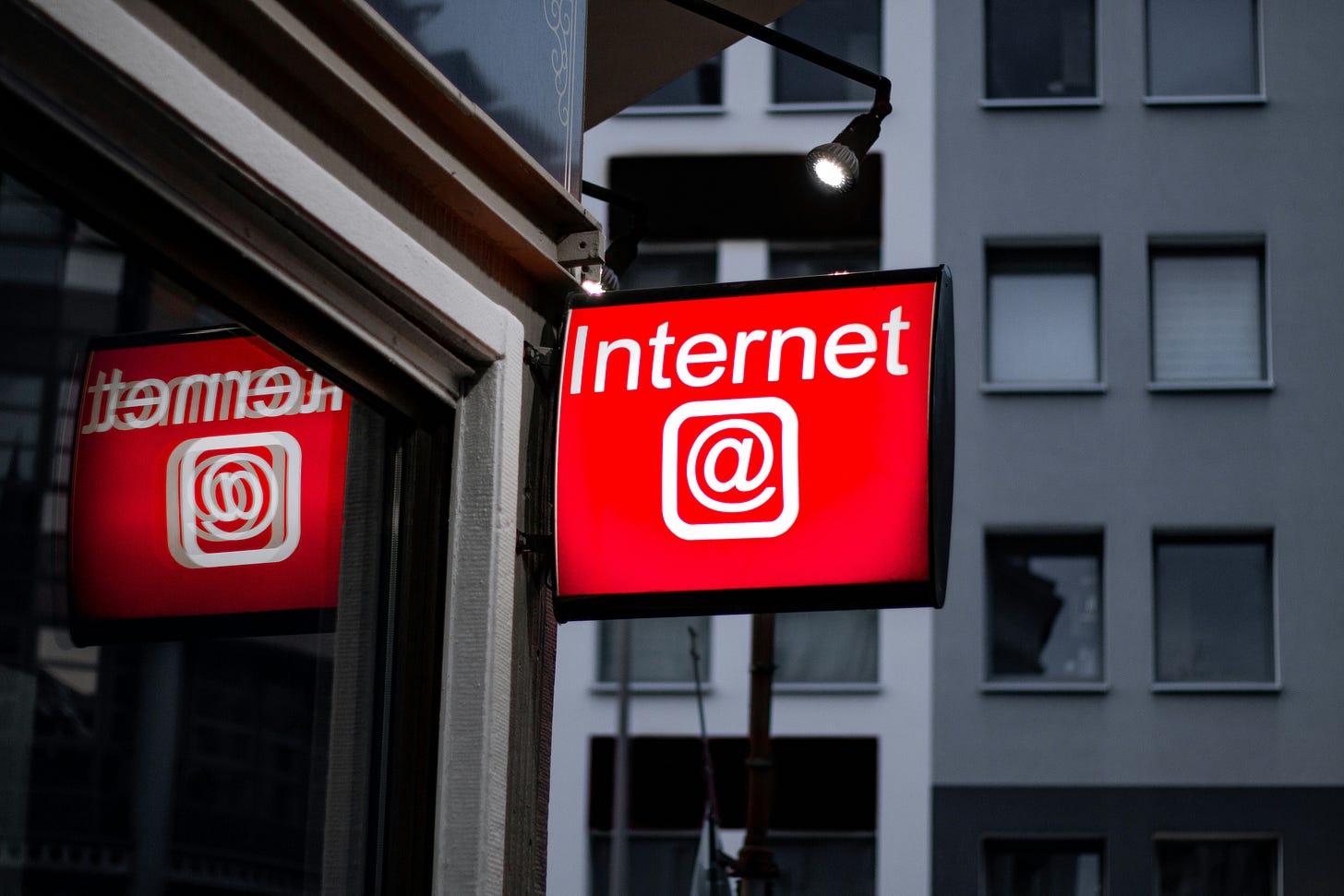Thursday Things is here! This week we take a ride on the information superhighway and tour the tunnels of Milan.
If you enjoy this edition, please click the heart icon in the header or at the end of the post to let me know.
Duomo di Milano, Milano, Italy. Photo by Benjamin Voros on Unsplash
Tunnels of Milan
This seems to be the year for finding secret tunnels. We recently highlighted the Inca tunnels uncovered in Cusco. Today’s item takes us to Milan:
Mysterious tunnels sketched by Leonardo da Vinci in the late 1400s may have been found
Leonardo da Vinci excelled in the fields of art and science, but the Italian polymath was also a highly skilled expert in military structures and defensive systems, breaking new ground in the strategy of warfare during the Renaissance with his designs and inventions.
Now, scientists have uncovered a hidden feature underneath a medieval castle in Milan, Italy, that researchers once could only speculate about based on a sketch of Leonardo’s from around 1495 and references in other historical sources — underground passageways that were likely intended for soldiers to use in the event that the castle’s defenses had been breached.
This item caught my eye because I am currently reading Leonardo da Vinci by Walter Isaacson (Audio | Kindle | Paperback) and I’m up to the chapters covering the period in which Leonardo lived in Milan. I’ve not visited Milan, but clearly need to.
Internet flashback
While 1995 was not the year the internet was invented, it was arguably the year in which the internet broke out into broad public awareness. It was 1995 when I first ventured onto the “World Wide Web” by installing an interface called NetCruiser from a company called Netcom in the mistaken belief that this was that Netscape “web browser” I had heard about. It took me a few months to realize my error and download the actual Netscape browser.1
I still remember staying up all night the first day I logged on, clicking from website to website. That was the main way you found new sites then — by finding a link to it from another site. That was the “web” part of World Wide Web.
Search engines weren’t really a thing yet. Yahoo was the big dog of finding your way around the WWW. It was a directory — a list of sites and links organized into categories. They added a search engine in 1995, but it was for searching the directory.
Later came Ask Jeeves, Lycos, Excite, Infoseek, AltaVista, and others. In the same way that there were many early automobile manufacturers of roughly equal size back in the day, before most went out of business or were acquired as Ford, GM, and Chrysler became the US Big 3, there was a plenitude of search engines before Google arrived at the end of the 90s and began its rise to dominance. My favorite was Dogpile, which was a meta-search engine that would run your search in several of the other search engines at once.
Back then we were more likely to speak of the World Wide Web or the “Information Superhighway” than the internet — which was typically capitalized (Internet) like it was a foreign country. Which it may as well have been. In addition to the WWW, there were other now obscure flavors of the internet like Gopher, Usenet, and FTP. It was all new and mysterious and often confusing, but exciting.
Anyway, that was thirty years ago, so naturally there are retrospective articles popping up, like this one:
‘The Internet? Bah!’ Remembering 1995, the year of the world wide web.
It’s now been 30 years since the internet and the world wide web undeniably entered mainstream consciousness.
A remarkable variety of digital mainstays trace their emergence to 1995, an innovative time crucial to the content and character of the digital landscape. In July 1995, Amazon.com began selling books online, although few noticed. The online dating service Match.com got started in 1995. So, too, did the predecessors of Craigslist and eBay.
I did actually notice Amazon and even opened my account in 1995. However I didn’t make my first Amazon purchase until 1998, because I lived across the street from a Borders bookstore, so waiting for a book to come in the mail didn’t make much sense to me until I wanted a book I couldn’t find elsewhere. But I was fascinated by the site.
CNN.com was launched in 1995. The New York Times offered a “special on-line report” in October 1995 during the visit pf Pope John Paul II to the U.S. It was a toe-dipping exercise for the newspaper, which went online in January 1996 as “The New York Times on the Web.”
Hints of social media were apparent in 1995 too, notably with the launch of Classmates.com, which digitized yearbooks and reconnected high school friends long after their graduation.
I vaguely recall early CNN.com. The article also discusses RealAudio, which was the Spotify of its day. The awkward, unreliable, often crashing Spotify of its day. I’m sure I still have some downloaded RealAudo files saved somewhere.
Most Americans were not online then, and those who were — 14 percent had internet access in 1995, according to the Pew Research Center’s predecessor organization — mostly did so through quirky dial-up phone modems. Many people accessed the internet using service providers such as CompuServe, Prodigy and America Online.
My recollection is fuzzy, but I think I used Netcom as my internet access for several years — in glorious dial-up! — and didn’t succumb until later to installing AOL from a CD-ROM that arrived in the mail. My first personal (as opposed to work) email address was an ix.netcom.com address.
But by 1995, most Americans had at least heard about the internet and the web, and could sense something important was afoot. Inevitably, coherent characterizations of the online world were challenging for journalists. Those explanations seem quaint and amusing today.
That they do. Go read the article for that and for more of a stroll down the online memory lane.
That said, I think the article in The Hill was really just an excuse to once again mention the infamous 1995 essay in Newsweek titled ‘The Internet? Bah!’
Here is the pdf to read it in all its glory: The Internet? Bah!
Visionaries see a future of telecommuting workers, interactive libraries and multimedia classrooms. They speak of electronic town meetings and virtual communities. Commerce and business will shift from offices and malls to networks and modems. And the freedom of digital networks will make government more democratic.
Baloney. Do our computer pundits lack all common sense? The truth in no online database will replace your daily newspaper, no CD-ROM can take the place of a competent teacher and no computer network will change the way government works.
Written by Clifford Stoll, one of the worst technology prognosticators of all time, this classic column has been roundly mocked for decades.
Here is an example from 2017: For the Web's 28th Birthday, We Red-Penned This Laughably Inaccurate Internet Essay
In fairness to Mr. Stoll, predicting the future is hard. Fortunately, we now have AI to do that for us.
Remember Internet Cafes? Photo by Leon Seibert on Unsplash
This week’s edition is brought to you by Dan’s Advice: Take control of your digital life.
Today we’ve all got a plethora of electronic devices overstuffed with files, apps, notifications, passwords, and more to keep up with. Has the internet made our lives simpler? Hard to say. But if you feel the need for digital decluttering, visit my new site Dan’s Advice and try my Top 10 Digital Decluttering Tips for Beginners.
Thank you for reading!
Please click the hearts, leave a comment, and use the share feature to send this issue to a friend who might enjoy it. See you next Thursday!
As an Amazon Associate, I earn from qualifying purchases if you buy from one of the affiliate links on this page.
In my defense I also kept confusing Sauron and Saruman the first time I read the Lord of the Rings in the 4th grade. Unfamiliar names with similar spellings is one of my three known weaknesses.





